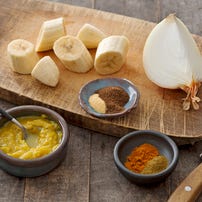Spicy, tangy flavors trending at foodserviceSpicy, tangy flavors trending at foodservice
Emerging trends include a spotlight on underexplored Southeast Asian fare and the evolution of consumers’ insatiable appetite for spicy and pulses.
January 15, 2016

McCormick & Company, Incorporated, a global leader in flavor, has unveiled its annual McCormick Flavor Forecast revealing the tantalizing trends that will shape culinary exploration and innovation throughout the foodservice industry. Emerging trends include a spotlight on underexplored Southeast Asian fare and the evolution of consumers’ insatiable appetite for spicy and pulses, which serve as a protein-packed canvas for delicious flavors.
“As a company dedicated to flavor, we look forward every year to unveiling these emerging trends,” says Megan Ford, vice president of branded food service, McCormick & Company. “Chefs and consumers continue to challenge their palates and seek out more adventurous eating experiences than ever. Innovation is crucial for menu differentiation, and our Flavor Forecast helps foodservice professionals stay steps ahead of the current trends in the industry.”
McCormick For Chefs’ Executive Chef Gary Patterson adds, “Our 16th annual Flavor Forecast introduces the next iteration of flavor trends that are just beginning to emerge. Our goal is to inspire powerful menu creations that make a noticeable impact on the foodservice industry for years to come.”
Identified by a global team of McCormick chefs, food technologists and flavor experts, these trends offer a taste of 2016 and beyond:
Heat + tang. Spicy finds a welcome contrast with tangy accents to elevate the eating experience. (Peruvian chilies like rocoto, ají amarillo and ají panca paired with lime; Sambal sauce made with chilies, rice vinegar and garlic.)

Image credit: McCormick
Tropical Asian. The vibrant cuisine and distinctive flavors of Malaysia and the Philippines draw attention from adventurous palates seeking bold new tastes. (Pinoy BBQ, a popular Filipino street food, is flavored with soy sauce, lemon, garlic, sugar, pepper and banana ketchup; Rendang curry, a Malaysian spice paste, delivers mild heat made from chilies, lemongrass, garlic, ginger, tamarind, coriander and turmeric.)
Blends with benefits. Flavorful herbs and spices add everyday versatility to good-for-you ingredients. (Matcha’s slightly bitter notes are balanced by ginger and citrus; Chia seed becomes zesty when paired with citrus, chile and garlic; Turmeric blended with cocoa, cinnamon and nutmeg offers sweet possibilities; Flaxseed enhances savory dishes when combined with Mediterranean herbs.)
Alternative "pulse" proteins. Packed with protein and nutrients, pulses are elevated when paired with delicious ingredients. (Pigeon peas, called Toor Dal when split, are traditionally paired with cumin and coconut; Cranberry beans, also called borlotti, are perfectly enhanced with sage and Albariño wine; Black beluga lentils are uniquely accented with peach and mustard.)
Ancestral flavors. Modern dishes reconnect with native ingredients to celebrate food that tastes real, pure and satisfying. (Ancient herbs like thyme, peppermint, parsley, lavender and rosemary are rediscovered; Amaranth, an ancient grain of the Aztecs, brings a nutty, earthy flavor; Mezcal is a smoky Mexican liquor made from the agave plant.)
Culinary-infused sips. Three classic culinary techniques provide new tastes and inspiration in the creation of the latest libations. (Pickling combines tart with spice for zesty results; Roasting adds richness with a distinctive browned flavor; Brûléed ingredients provide depth with a caramelized sugar note.)
View the Flavor Forecast 2016 or explore menu ideas online.
You May Also Like



